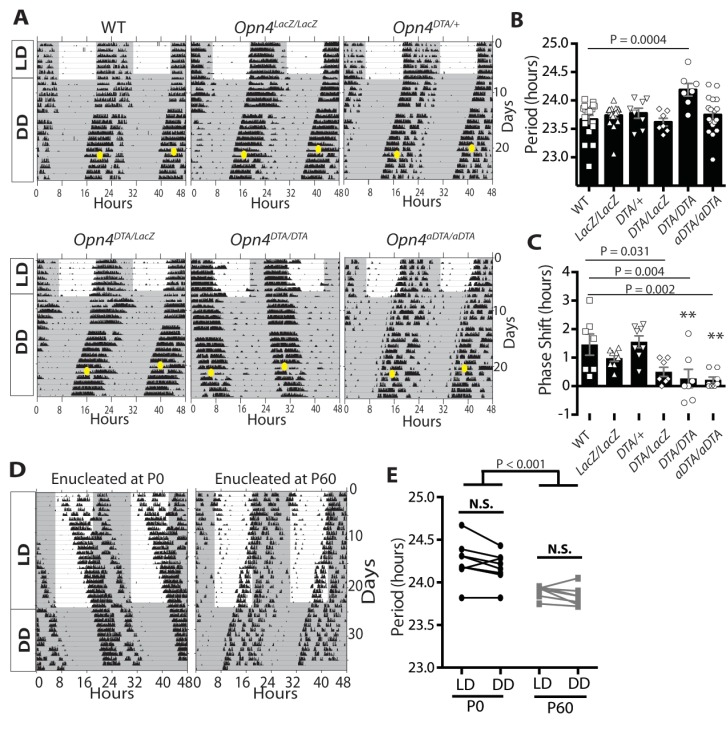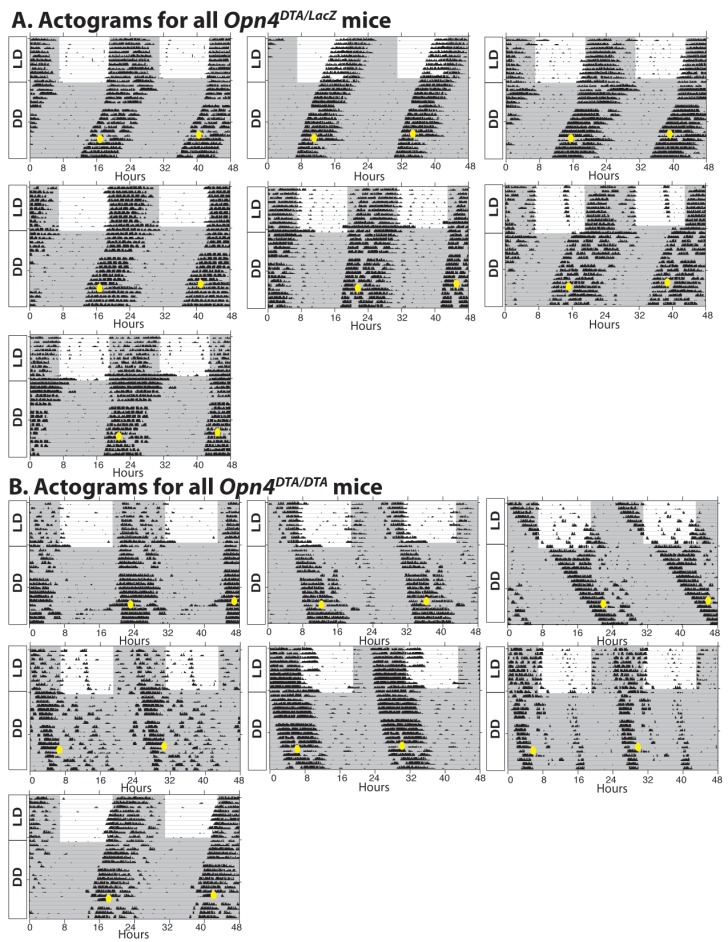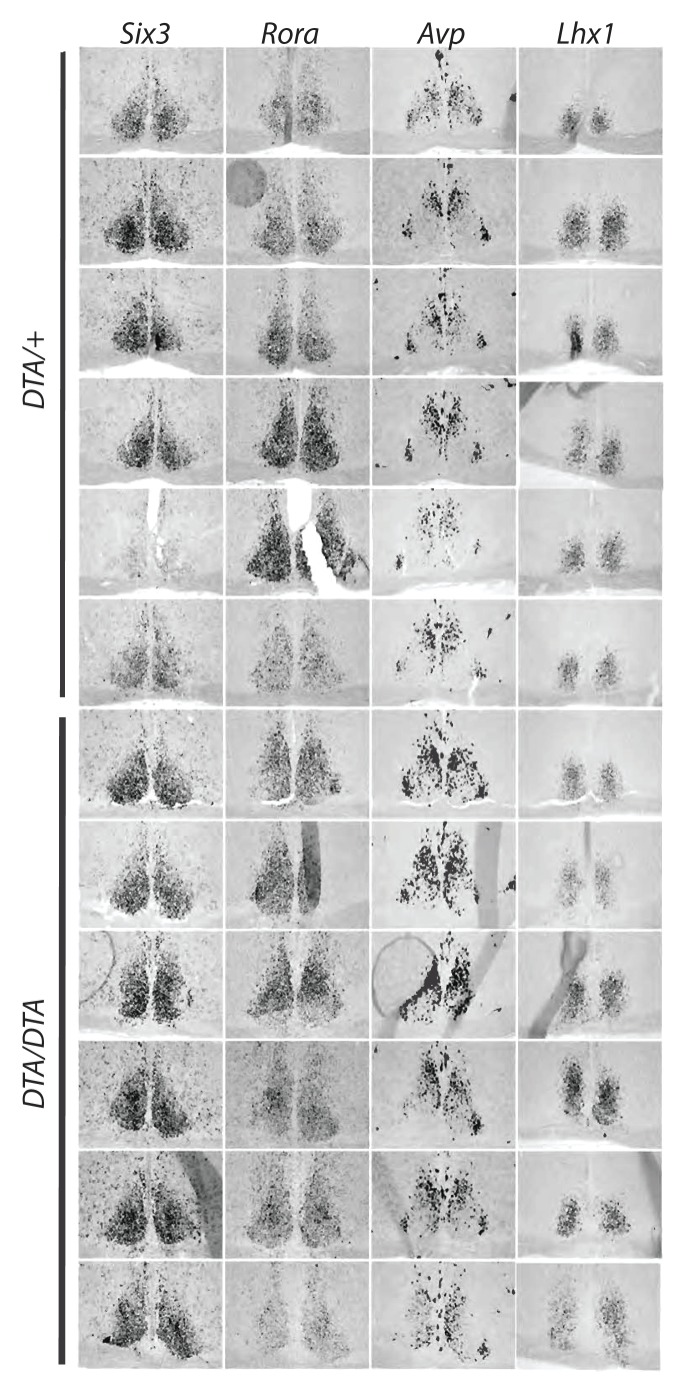Figure 2. Developmental ablation of ipRGCs results in a lengthened circadian period.
(A) Representative actograms of wild-type, Opn4LacZ/LacZ, Opn4DTA/+, Opn4DTA/LacZ, Opn4DTA/DTA and Opn4aDTA/aDTA mice under 12:12-LD cycle and constant darkness (DD). White background indicates light and grey background indicates darkness. (B) The circadian period length of all tested genotypes (wild-type: n = 18, Opn4LacZ/LacZ: n = 17, Opn4DTA/+: n = 8, Opn4DTA/LacZ: n = 7, Opn4DTA/DTA: n = 7, and Opn4aDTA/aDTA: n = 18). (C) For phase-shifting experiments, a subset of wild-type, Opn4LacZ/LacZ, Opn4aDTA/aDTA were assessed, and the total mice analyzed was as follows: wild-type (n = 7), Opn4LacZ/LacZ (n = 8), Opn4DTA/+ (n = 8), Opn4DTA/LacZ (n = 7), Opn4DTA/DTA (n = 7), and Opn4aDTA/aDTA (n = 8). As expected from substantial ipRGC ablation, phase shifting was significantly reduced in Opn4DTA/LacZ, Opn4DTA/DTA and Opn4aDTA/aDTA mice. (D) Representative actograms of wild-type mice enucleated at either P0 (n = 8) or P60 (n = 7), under 12:12-LD and DD. (E) The circadian period length for both enucleation groups. Only mice enucleated at P0 exhibited a lengthened circadian period (B and C) One-way ANOVA with Bonferroni's multiple comparisons test and adjusted p values. (E) Two-way ANOVA, Bonferroni's multiple comparisons test and adjusted p values. Error bars represent s.e.m. for all graphs. See also Figure 2—figure supplements 1–2.



